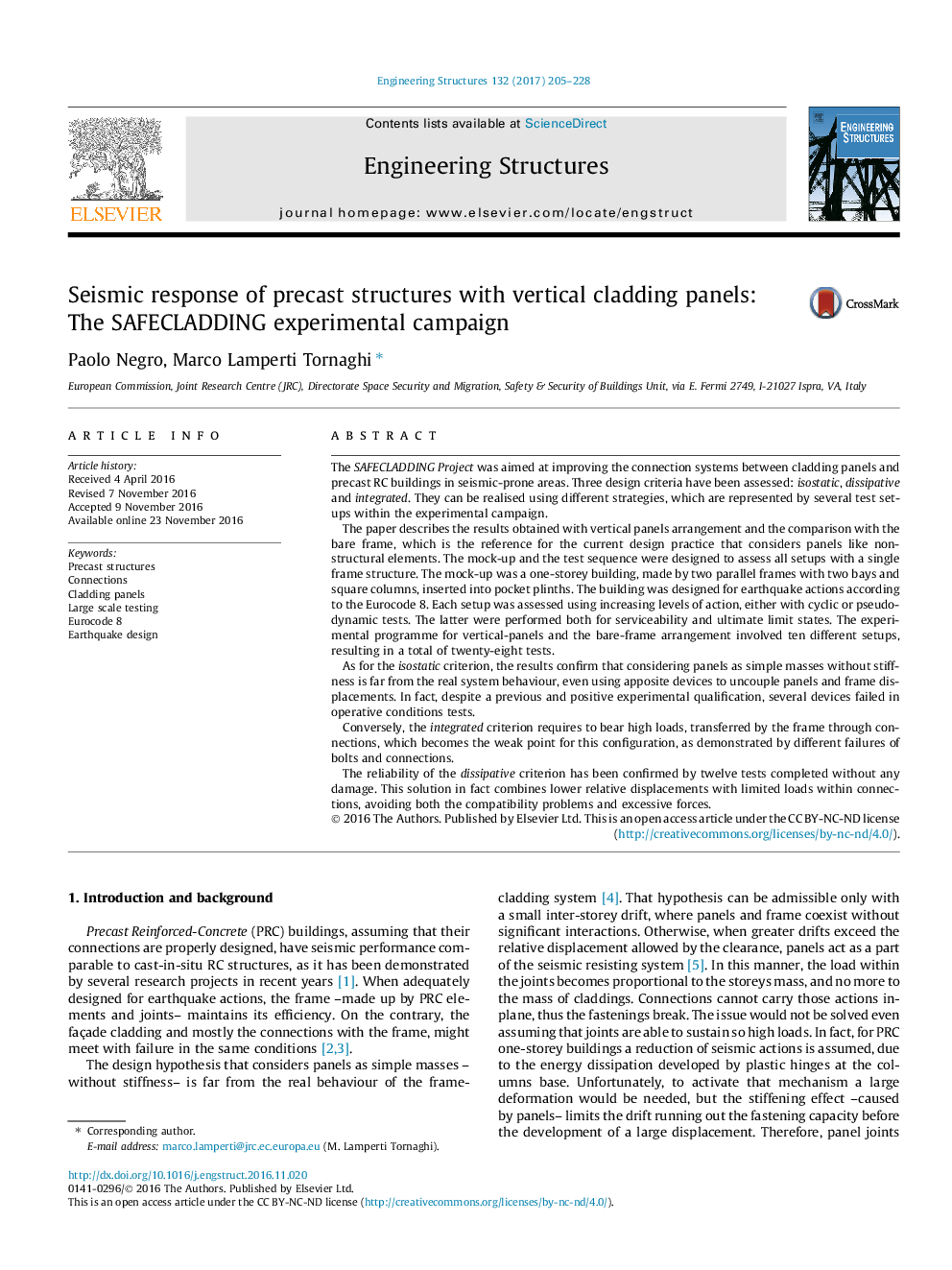| Article ID | Journal | Published Year | Pages | File Type |
|---|---|---|---|---|
| 4920432 | Engineering Structures | 2017 | 24 Pages |
â¢Many problems still exist with the current design practice for claddings connections.â¢Three ways to connect vertical panels and precast frame in seismic areas are analysed.â¢The experiment results of a full-scale mock-up, 28 tests and 10 setups, are presented.â¢Many possibilities do exist using innovative technical solutions, such as dissipation.â¢Friction-Based Devices among panels reduce relative displacements keeping forces low.
The SAFECLADDING Project was aimed at improving the connection systems between cladding panels and precast RC buildings in seismic-prone areas. Three design criteria have been assessed: isostatic, dissipative and integrated. They can be realised using different strategies, which are represented by several test setups within the experimental campaign.The paper describes the results obtained with vertical panels arrangement and the comparison with the bare frame, which is the reference for the current design practice that considers panels like non-structural elements. The mock-up and the test sequence were designed to assess all setups with a single frame structure. The mock-up was a one-storey building, made by two parallel frames with two bays and square columns, inserted into pocket plinths. The building was designed for earthquake actions according to the Eurocode 8. Each setup was assessed using increasing levels of action, either with cyclic or pseudo-dynamic tests. The latter were performed both for serviceability and ultimate limit states. The experimental programme for vertical-panels and the bare-frame arrangement involved ten different setups, resulting in a total of twenty-eight tests.As for the isostatic criterion, the results confirm that considering panels as simple masses without stiffness is far from the real system behaviour, even using apposite devices to uncouple panels and frame displacements. In fact, despite a previous and positive experimental qualification, several devices failed in operative conditions tests.Conversely, the integrated criterion requires to bear high loads, transferred by the frame through connections, which becomes the weak point for this configuration, as demonstrated by different failures of bolts and connections.The reliability of the dissipative criterion has been confirmed by twelve tests completed without any damage. This solution in fact combines lower relative displacements with limited loads within connections, avoiding both the compatibility problems and excessive forces.
Graphical abstractDownload high-res image (326KB)Download full-size image
